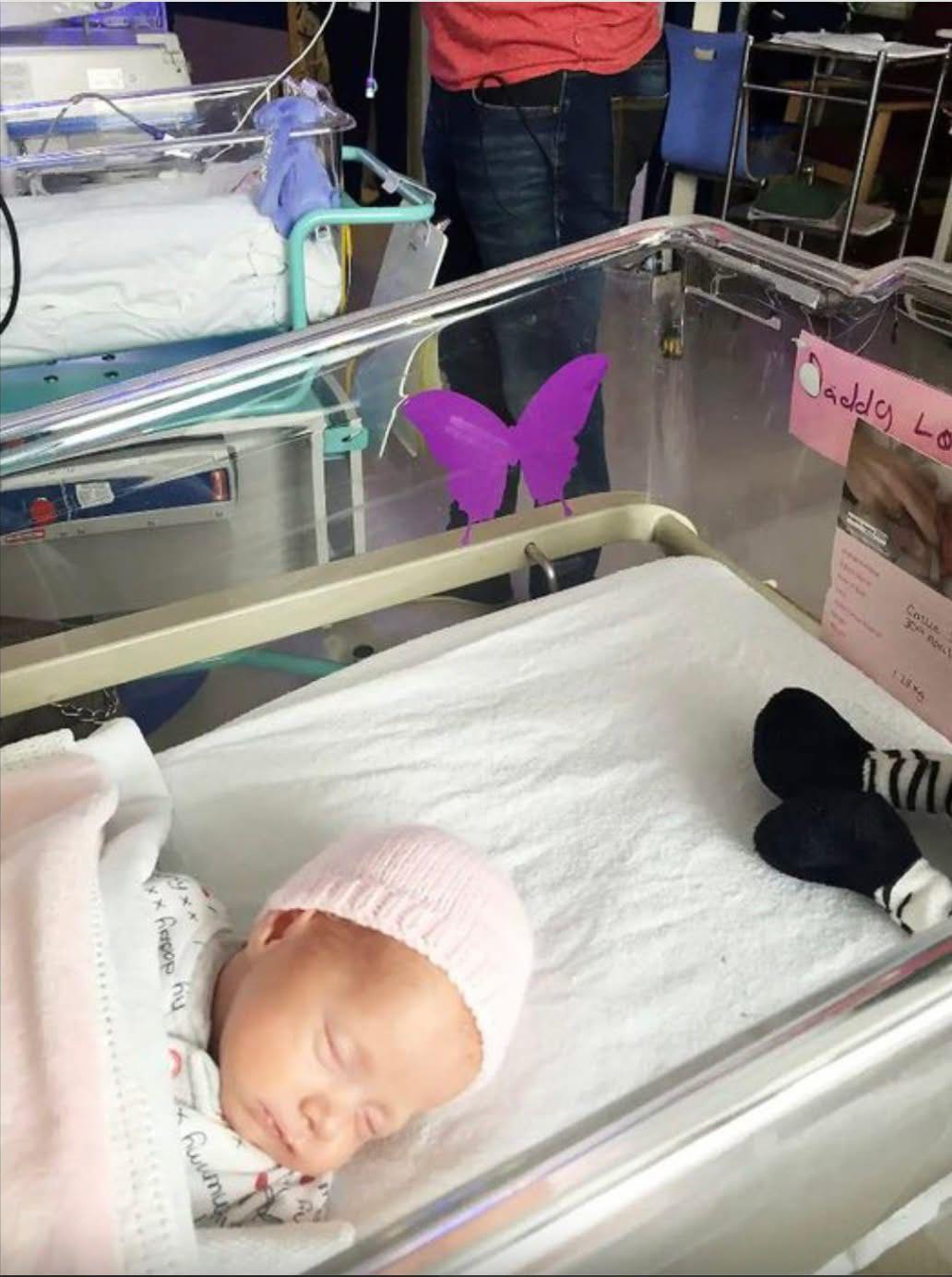Introduction:
A purple butterfly sticker near a newborn may seem like a simple decoration, but it carries deep emotional meaning for grieving parents. The story behind this symbol stems from a heartbreaking experience that turned into a powerful initiative to support families who have lost a baby, especially in the case of twins. Millie Smith and Lewis Cann, parents of twins, started a movement to help bring awareness and compassion to those who experience the unimaginable loss of a baby.
The Heartbreaking Story of Skye:
Millie and Lewis were overjoyed to learn they were expecting twins. However, early in the pregnancy, they were informed that one of their daughters, Skye, had anencephaly, a life-limiting condition that affects the brain and spinal cord. Doctors explained that Skye would likely survive only minutes or hours after birth. Despite the prognosis, Millie and Lewis chose to name their daughter Skye, as they wanted her to have an identity and a connection to the world before saying their final goodbyes.
The name “Skye” held special meaning for Millie and Lewis, symbolizing a place where their baby would always be—somewhere they could look up at the sky and remember their daughter. Skye lived for just three hours, and in that time, her parents cherished every moment they had with her. They cuddled with her and admired her beauty, finding solace in the precious time they spent together.
The Struggles After Loss:
While Millie and Lewis navigated the pain of losing Skye, they were provided with support from a “bereavement midwife” and a “Daisy Room,” a special space where parents can spend time with their infant before and after death. However, as time passed, Millie felt that Skye’s existence was being forgotten. The nurses and hospital staff stopped mentioning Skye, and other families were unaware of her loss. One day, another mother made a comment about how lucky Millie was not to have twins, unaware of the heartbreaking truth. This comment nearly broke Millie, highlighting the lack of awareness and understanding about her loss.
The Purple Butterfly Sticker:
This experience led Millie to create a simple yet meaningful solution—a purple butterfly sticker to indicate the loss of one or more babies in a set of multiples. She chose a butterfly because it symbolized babies who “fly away,” and the color purple to make it suitable for both boys and girls. Millie believed that this small gesture would help other families understand the situation without the need for painful explanations.
The Skye High Foundation and Purple Butterfly Initiative:
Millie’s initiative grew into the Skye High Foundation, which supports the purple butterfly initiative. The foundation’s goal is to raise awareness and help parents who have lost a child, especially in cases of multiple births. Through this initiative, hospitals worldwide have adopted the purple butterfly sticker, providing a compassionate way to acknowledge a loss and create a supportive environment for grieving families.
The foundation also sells purple butterfly merchandise, including gifts and accessories, to help raise funds and continue spreading the message of hope and understanding.
A Lasting Legacy:
Today, Millie’s surviving daughter, Callie, is seven years old, and Millie continues her mission to support grieving families. While she acknowledges that there is no way to prevent the pain of losing a child, she hopes that by raising awareness and providing support, other families won’t have to go through their loss alone.
Conclusion:
The purple butterfly sticker is more than just a symbol—it’s a reminder of the fragile nature of life and the importance of compassion during moments of deep loss. Thanks to Millie Smith’s initiative, families who have experienced the unimaginable can now find comfort in knowing that their grief is acknowledged, and their loved ones’ memories will not be forgotten.
Please SHARE this article with your family and friends on Facebook.



